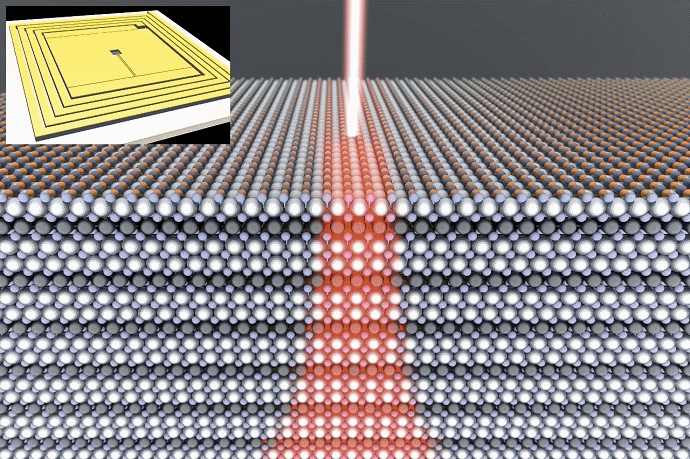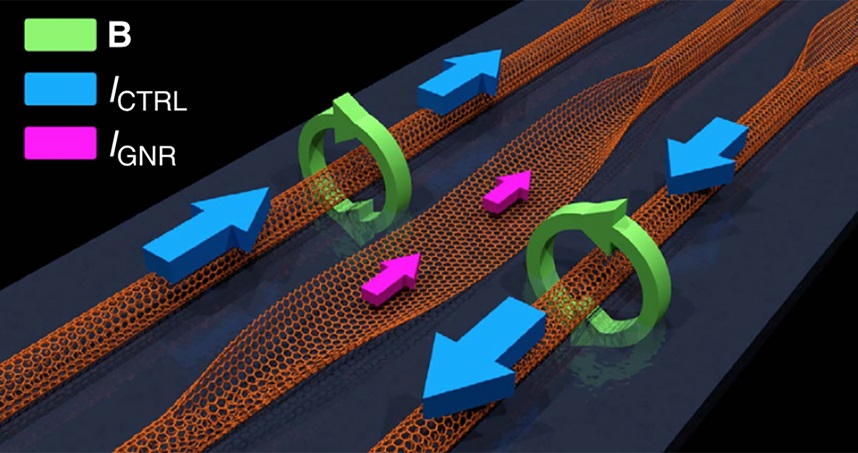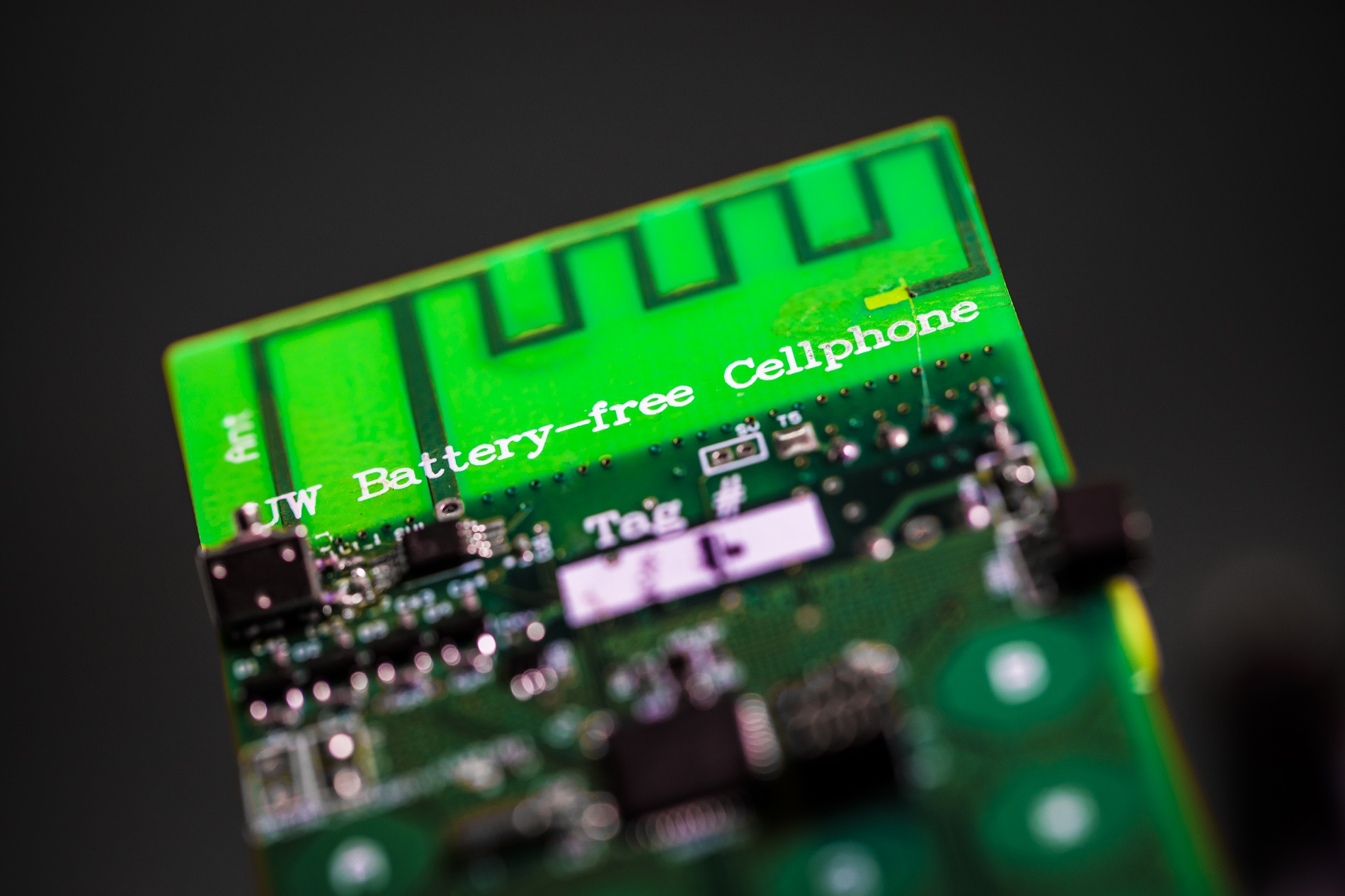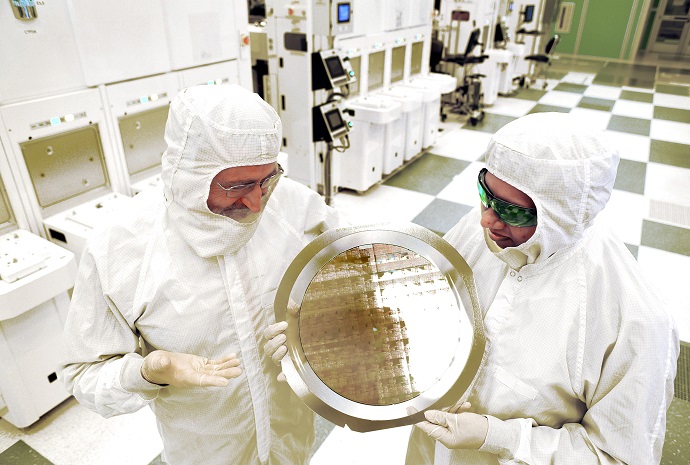June 22, 2015
By Kim McDonald
Physicists at UC San Diego have developed a new way to control the transport of electrical currents through high-temperature superconductors—materials discovered nearly 30 years ago that lose all resistance to electricity at commercially attainable low temperatures.
Their achievement, detailed in two separate scientific publications, paves the way for the development of sophisticated electronic devices capable of allowing scientists or clinicians to non-invasively measure the tiny magnetic fields in the heart or brain, and improve satellite communications.
“We believe this new approach will have a significant and far-reaching impact in medicine, physics, materials science and satellite communications,” said Robert Dynes, a professor of physics and former Chancellor of UC San Diego. “It will enable the development of a new generation of superconducting electronics covering a wide spectrum, ranging from highly sensitive magnetometers for biomagnetic measurements of the human body to large-scale arrays for wideband satellite communications. In basic science, it is hoped it will contribute to the unravelling of the mysteries of unconventional superconductors and could play a major role in new technologies, such as quantum information science.”
The research team headed by Dynes and Cybart, summarized its achievements in this week’s issue of Applied Physics Letters. Another paper outlining the initial discovery was published online April 27 in the journal Nature Nanotechnology.
The developments breathe new life into the promise of electronics constructed from ceramic materials that become superconducting—that is, lose all resistance to electricity—at temperatures that can be easily achieved in the laboratory with liquid nitrogen, which boils at 77 degrees Kelvin or 77 degrees above absolute zero.
Physicists first discovered high-temperature superconductivity in a copper-oxide materials in 1986, setting off an intense effort to develop new kinds of electronics and other devices with this new material.
“Scientists and engineers worked with fervor to develop these new exciting materials, but soon discovered that they were much more complicated and difficult to work with than imagined,” said Dynes. “These new materials demanded novel device architectures that proved very difficult to realize.”
The UC San Diego physicists found a way to control electrical transport through these materials by building a device within the superconducting material called a “Josephson junction,” analogous in function to the transistor in semiconductor electronics. It’s composed of two superconducting electrodes separated by about one nanometer or a billionth of a meter.
“Circuits built from Josephson junctions called Superconducting QUantum Interference Devices (SQUIDS), are used for detectors of extremely small magnetic fields, more than 10 billion times smaller than that of Earth,” said Dynes. “One major drawback to these earlier devices is the low temperatures required for their operation, typically just 4 degrees above absolute zero. This requires intricate and costly cooling systems.”
“Nearly three decades have passed since the discovery of the first high-temperature superconductor and progress in constructing electronic devices using these materials has been very slow because process control at the sub-10-nanometer scale is required to make high quality Josephson junctions out of these materials,” he explained.
The UC San Diego physicists teamed up with Carl Zeiss Microscopy in Peabody, Massachusetts, which has a facility capable of generating highly focused beams of helium ions, to experiment with an approach they believed might avoid previous problems.
“Using the Zeiss Orion’s finely focused helium beam, we irradiated and hence disordered a nanoscale region of the superconductor to create what is called a ‘quantum mechanical tunnel barrier’ and were able to write Josephson circuits directly into a thin film of the oxide superconductor,” said Shane Cybart, a physicist in Dynes’ laboratory who played a key role in the discoveries.. “Using this direct-write method we eliminated the lithographic processing and offered the promise of a straightforward pathway to quantum mechanical circuits operating at more practical temperatures.”
“The key to this method is that these oxide superconductors are very sensitive to the point defects in the crystal lattice caused by the ion beam. Increasing irradiation levels has the effect of increasing resistivity and reducing the superconducting transition temperature,” said Cybart. “At very high irradiation levels the superconductor becomes insulating and no longer conducts or superconducts. This allows us to use the small helium beam to write these tunnel junctions directly into the material.”
The Nature Nanotechnology paper describes the development of the basic Josephson junction, while the Applied Physics Letters paper describes the development of the magnetic field sensor built from two junctions.
The UC San Diego physicists, who filed a patent application to license their discovery, are now collaborating with medical researchers to apply their work to the development of devices that can non-invasively measure the tiny magnetic fields generated within the brain, in order to study brain disorders such as autism and epilepsy in children.
“In the communications field, we are developing wide bandwidth high data throughput satellite communications,” said Cybart. “In basic science, we are using this technology to study ceramic superconducting materials to help determine the physics governing their operation which could lead to improved materials working at even higher temperatures.”
Other researchers involved in the two discoveries were UC San Diego physicists E.Y. Cho, T.J. Wong, Meng Ma and Bjorn Wehlin: Chuong Huynh at Zeiss Microscopy. D.N. Paulson and Kevin Pratt of Tristan Technologies in San Diego assisted the UC San Diego group with testing the devices and incorporating them into biomedical imaging systems. The research effort was supported by grants from the Office of Science and Office of Basic Energy Sciences of the U.S. Department of Energy and the Air Force Office of Scientific Research.
The Applied Physics Letters paper can be accessed at: http://scitation.aip.org/content/aip/journal/apl/106/25/10.1063/1.4922640















